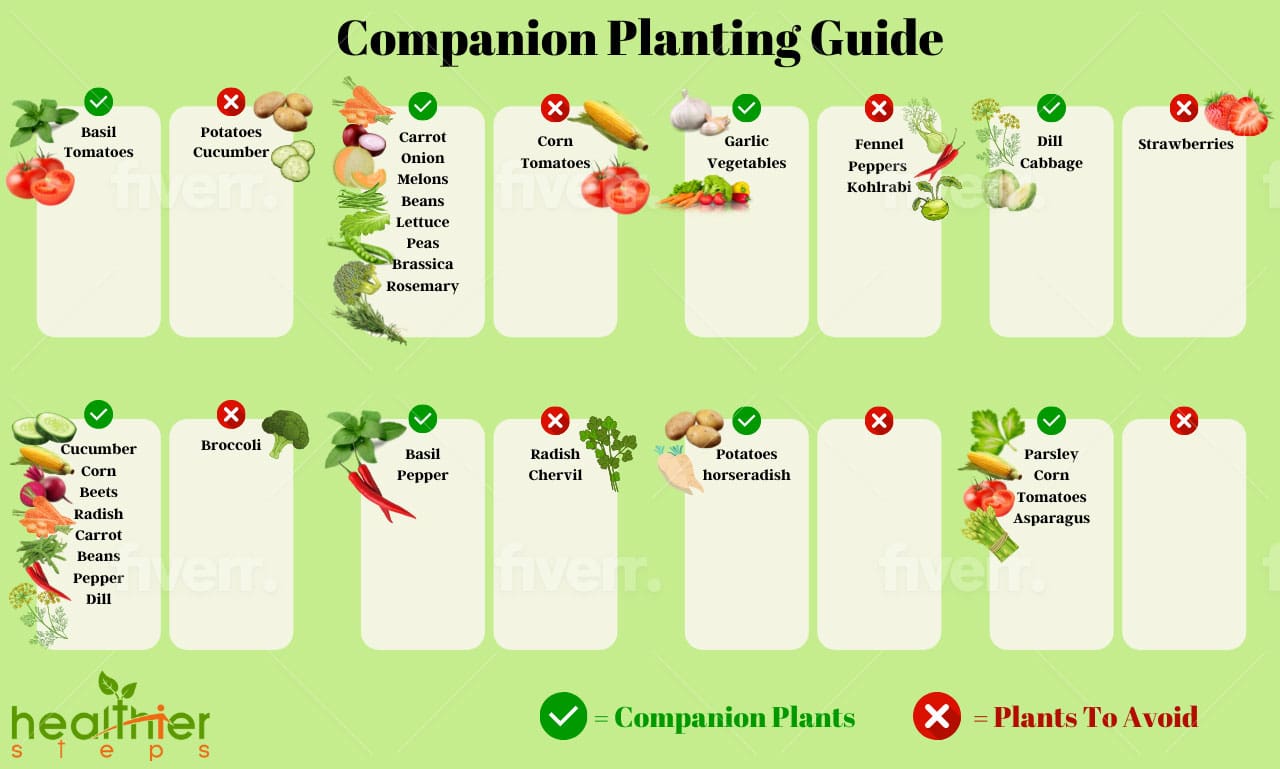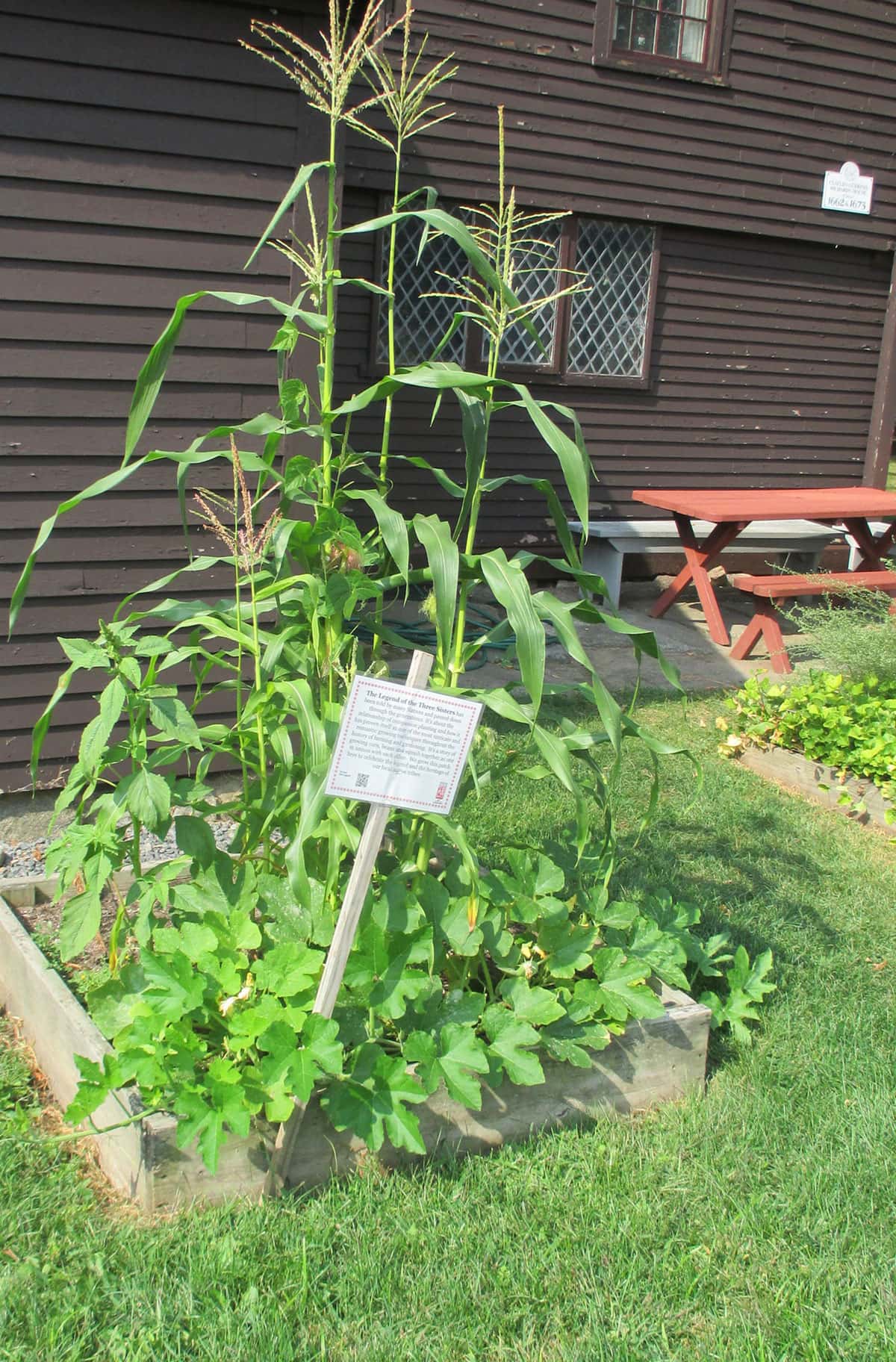The Ultimate Guide to Companion Planting
Have you ever been talked about because of the company you keep? It’s great to have friends that will support you in many ways and you can do the same. Well, say hello to companion planting because it’s just the same. By growing the right plants together, you could be in for amazing benefits of better-grown vegetables and a reduction in pests. But let’s cover the basics before we jump right into it.
Also see, Community Garden Benefits, How To Grow Cauliflower and Growing Fruits Vertically
What is Companion Planting?
Companion planting is a method of growing two or more plants together so they all can reap great benefits. Gardeners have been using this method for many years and it has proven to be quite effective. Companion plants attract insects that are beneficial and repel those that aren’t.
It even occurs naturally for some plants while others are never paired…ever! Plants like humans, all compete for scarce resources, nutrients, and space. This is why research before companion planting is crucial as some plants will bully and take more than their fair share of supplements. Other plants release toxins that are dangerous enough to kill other plants or reduce growth and should be avoided.
As you read further into this post you’ll learn more details about companion planting, the benefits, and some of the best and worst plants to pair together.

The Benefits of Companion Planting
Companion planting has many benefits and using it will take your garden to another great level.
-
Companion Planting Controls Pests
If you’d like to have a pest-free harvest then companion planting can help you with that. Some plants act as insect repellants when planted together. They deter critters by creating a particular scent that they do not like. For example, the smell of garlic is strong enough to prevent some insects from attacking your vegetables. Companion planting also attracts beneficial insects like bees and pest-eating wasps.
-
Companion Planting Helps with Pollination
Planting different crops together improves their chances of growth. Some crops that produce nectar that will attract birds and bees that will help to spread pollen. As the pollinator moves from crop to crop collecting the nectar that they contain, they’re also moving pollen. Some fruits and vegetables will not produce if they are not pollinated.
-
Companion Planting Saves Space
Planting several vegetables can occupy a lot of space especially if a garden is very small. A great benefit of companion planting is that it leaves more free space so you can add other vegetables. This can be done by growing a vegetable with very deep roots and another plant with shallow roots. Both will use up the same amount of space to grow the way they need to without tangling.
-
Companion Planting Will Increase Productivity
Overall, companion planting increases plant productivity in multiple ways. From pest control to boosting pollination, creating a habitat for beneficial pests, and making space. Although in modern-day gardening monocropping is what’s mainly practiced, companion planting is something all gardeners should try.
-
Companion Planting Improves Soil Quality
Some plants from the legumes group like peas and beans improve the fertility of the soil. They take nitrogen from the atmosphere and make it available to the soil. Also, plants with long taproots are able to pull nutrients embedded deep in the soil to the surface of plants with shallower root systems.
-
Companion Planting Shades Other Plants
Growing plants that enjoy exposure to the full sun is great, but there are others that prefer to lay within the comforts of partial to full shade. Companion planting enables plants that are taller to shelter shade-loving plants from the sun.
-
Companion Planting Offers Weed Suppression
Weeds are no friends of vegetables, fruits, and flowers. Their aim in the garden is to take as much water and nutrients as possible to spread throughout an entire garden and suffocate the other plants. Companion planting crops that like to sprawl in different areas like potatoes can suppress weed growth. They have tall plants that decrease the open areas where weeds would likely sprout and take hold.
The Best Plants to Companion Plant
If you’d like to try this technique but you’re not sure where to start, here is a list of vegetables that work well together. As you go along you may notice some of this helps to make delicious dishes too!

- Basil and Tomatoes. These two pair really well both in the kitchen and the garden. Basil helps the tomatoes so they can produce more while repelling mosquitoes, flies, and worms. To companion plant the two, plant basil soon after you have planted the tomato seeds outdoors.
- Carrots have a lot of compatible partners. These include onions, melons, beans, lettuce, peas, brassicas, and rosemary. Carrot and onions remain my specialty because the onions work well to ward off the carrot flies. Tomatoes will shade the carrots from the daunting summer sun and secrete solanine. Solanine is a form of natural insecticide that attacks pests that go after carrots. Carrots will boost the soil so tomatoes can absorb more water.

- Garlic and Vegetables are excellent because the garlic will nauseate beetles and aphids where ever they are in your garden.

- Dill and Cabbage together will summon the beneficial wasps that will fight cabbage loopers. Dill also enhances the flavor of your cabbages.
- Cucumbers can be companion planted with corn, beets, radish, carrots, beans, pepper, and dill. Marigold helps to repel beetles and nasturtium fight aphids, potato bugs, and squash bugs while increasing flavor and growth.
- Basil and Peppers work very similarly to tomatoes and basil. Basil will improve the flavor of the peppers all while repelling pests like spider mites, aphids, and mosquitoes.
- Potatoes and horseradish make great companions. Potatoes also work well with corn, beans, chamomile, and thyme.
- Parsley can be planted with corn, tomatoes, and asparagus. The parsley will attract good insects to pollinate and protect the tomatoes. They should be planted in between the tomatoes.
The Worst Plants to Companion Plant
There are some plants that are complete opposites and should never be paired together. Think of them as enemies who when placed together will only cause harm to each other.
- Potatoes and Cucumbers. These should not be planted next to each other because cucumbers attract blight and they will attack all the potatoes in your garden.
- Companion planting Corn and Tomatoes together is a bad idea. They are both an easy target for corn earworms. Also, tomatoes and potatoes are a bad combination because they are susceptible to blight which can spread from one to the other very quickly.
- Fennel, Peppers and Kohlrabi. Peppers work really well with a lot of veggies but fennel and kohlrabi are not one of them.
- Strawberries should be planted far and away from cauliflower, cabbage, tomatoes, mint, and pepper for obvious reasons. They are not compatible in the slightest.
- Broccoli should not be planted with peppers, corn, asparagus, peppers, tomatoes, and pumpkin. They do not make great companions.
- Radish and Chervil are not great companions as the chervil will make the radish too heated.

The Three Sisters Companion Planting Method
For many years, corn, beans, and squash have been referred to as the three sisters. Gardeners continuously plant them together because like great siblings, they thrived. This method of companion planting is done to suppress weeds, and deter pests. It also enriches the soil while the three plants support each other.
As the eldest sibling often does, the corn offers the required support to the beans. The pole beans then take nitrogen from the atmosphere and add it to the soil which benefits all three plants.
The beans will then push themselves through the tangles of the squash vines and entwine themselves up the cornstalks to find sunlight while holding all three sisters together. The big squash leaves protect the three by creating mulch that shades the soil keeping it moist and cool while preventing weeds from popping up. The squash leaves are quite picky so they help to ward off pests and animals.
How to Plant the Three Sisters?
Select a sunny location in your garden which get at least 6 hours of sun per day. The bean, corn, and squash will not be planted in a row. It will be more like a low wide mound.
- With 4 to 6 corn plants per hill, each mound will be roughly 4 ft wide and 4 ft apart. Prepare your soil in the spring with compost and organic matter.
- Create a mound that is flat in the middle with a 10 inches diameter.
- Sow a few corns in the mound an inch deep, 10 inches apart, and in a circle when temperatures are 55 F.
- The beans can be planted once the corn is 6 inches tall. Plant them evenly around the stalk. This way the corn stalk will be sturdy enough to hold support the beans.
- Within a week, you’ll be able to plant six squash seeds around the mound.
Other Gardening Articles
12 Essential Gardening Tools for Beginners
Benefits of Growing A Vegetable Garden
If you enjoyed The Ultimate Guide to Companion Planting and would love to see more, join me on Youtube, Instagram, Facebook & Twitter!
Get discounted copies of my cookbook here.
Fortunately, because of the Ads on our website, readers and subscribers of Healthier Steps are sponsoring many underprivileged families.







Thank you for sharing on companion planting
Thank you for the benefits of companion planting